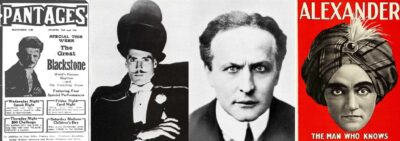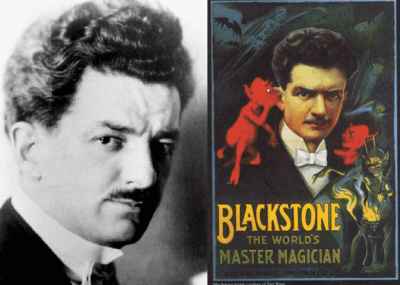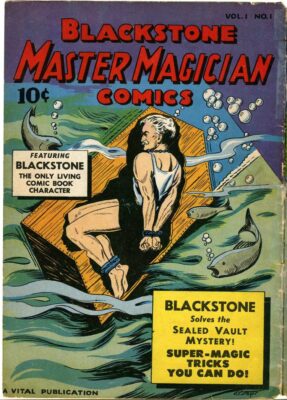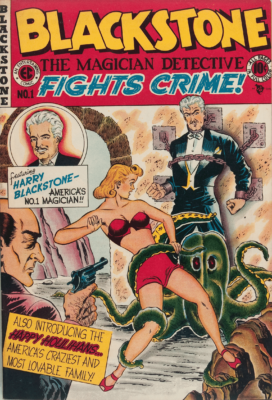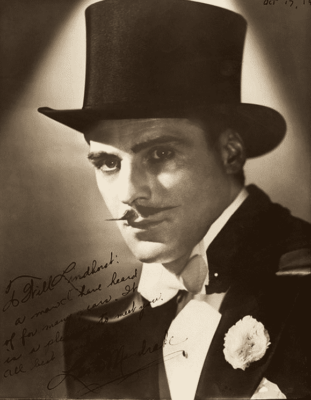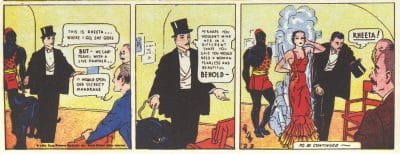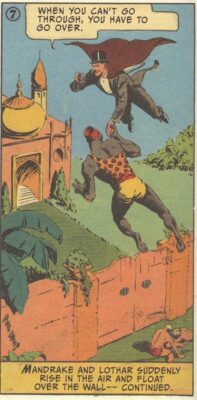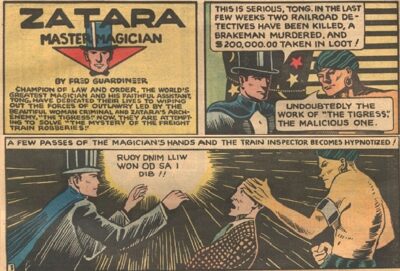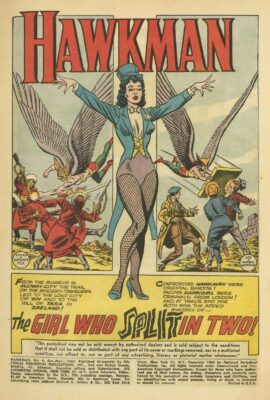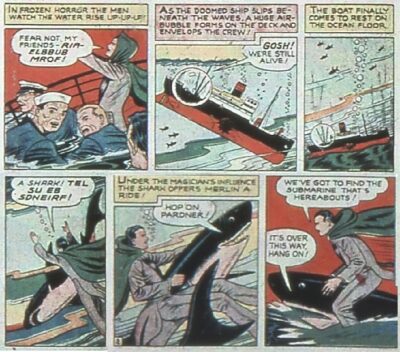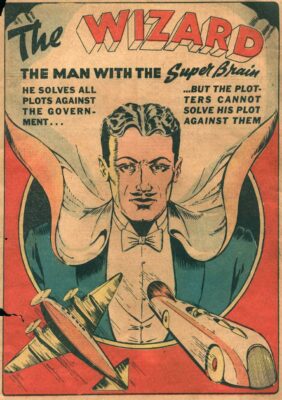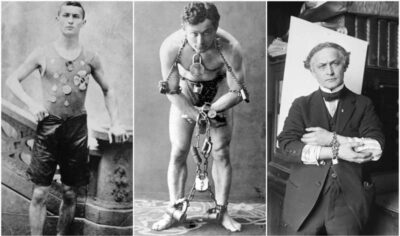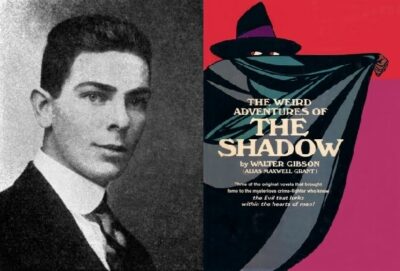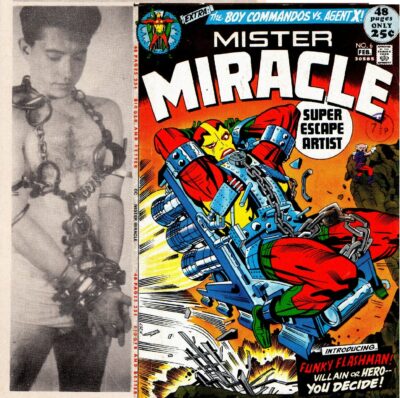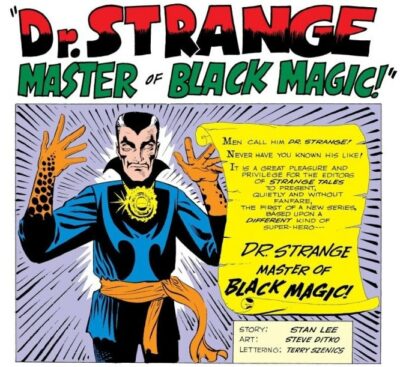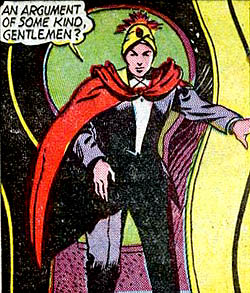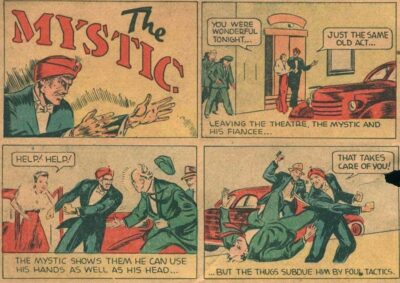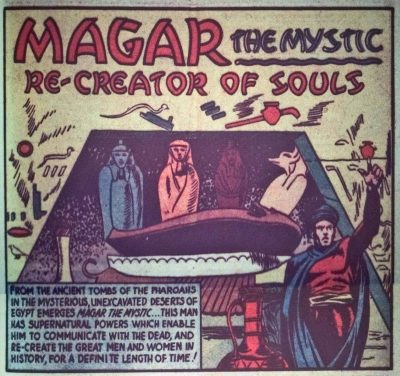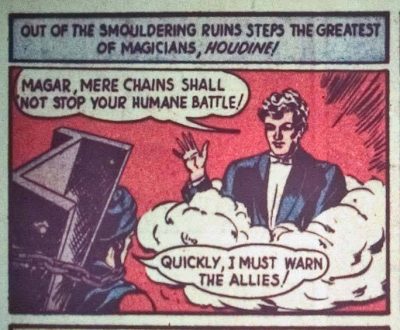The 4 Magi of Comics by Alex Grand
Read Alex Grand’s Understanding Superhero Comic Books published by McFarland Books in 2023 with Foreword by Jim Steranko with editorial reviews by comic book professionals, Jim Shooter, Tom Palmer, Tom DeFalco, Danny Fingeroth, Alex Segura, Carl Potts, Guy Dorian Sr. and more.
In the meantime enjoy the show:
Most of us turn to comic books often making it our gateway to the otherworldly, but back in the day it was the Stage Magicians who provided this fascination during the late 19th and early 20th century. The ability to bestow wonder was present in 4 important platinum age magicians who have partly influenced comic books in their own interesting and mysterious ways. I call them the 4 Magi of comics, The Great Blackstone, Leon Mandrake, Harry Houdini, and Alexander, the One Who Knows.
Harry Blackstone Sr, born in 1885 and died 1965 was an illusionist who invented devices that gave off impressions of magic in his shows like appearing to impale his assistants, or sawing them in half. His devices such as the Vanishing Birdcage, Dancing Handkerchief, Floating Light Bulb and a whole lot more delivered amazement and baffled audiences that made him very famous across the country. Harry was an expert in the art of slight-of-hand which involved tiny objects in most of his performances.
Walter Gibson, writer of the Shadow who scripted Blackstone’s first comic in Street & Smith’s Super-Magician Comics #2, 1941 and EC Stoner, who created a comic for him in 1946 for Vital Publications.
EC Stoner is memorable in that he was an early African American illustrator who designed the Planter’s peanuts character who sports the same magician top hat.
EC Comics later did a comic of him for a single issue which sports a Johnny Craig cover with a Blackstone story by again, Walter Gibson.
Leon Mandrake, one of the very key figures to the comic book world worked as a famous illusionist starting in 1924. He was originally a vaudeville performer who ended up wowing audiences with fire eating, mind reading and ventriloquism. As a child, Leon’s dream was to become a great magician so he did odd jobs for them in return or lessons. He started performing as magician himself by the age of 11. At 14 years of age, he worked at carnivals doing his mesmerizing acts that has made him famous in his time. By 1946, He was doing sold out shows in LA and Las Vegas.
Lee Falk created the ‘Mandrake the Magician’ comic book in 1934 where he wielded the same cape and top hat, and whose powers included shape changing himself and others,
performing levitation and making himself grow larger.
As a reader, we were never sure if it’s genuine power or the characters in the story were merely getting hypnotized into thinking this stuff was happening. But regardless, he often gets regarded as the first superhero caped crusader in comic books. Fred Guardineer modeled Zatara, another magician hero after Mandrake in Action Comics 1, 1938. He could will his power over people if he said phrases backwards.
Zatara’s daughter Zatanna premiered in Hawkman 4 in 1964 who was similarly powered and is on a quest to find her missing father. Generally the Silver Age retconned characters for DC, and in this case the emphasis was on his daughter as the beautiful and skilled protagonist.
Fred Guardineer also gave Quality Comic’s ‘Merlin the Magician’ backward Zatara style magic speech in National Comics 12, 1941.
The Wizard from Top Notch Comics 1, 1939 uses science, chemistry and physics to perform his amazing feats like the magicians of the early twentieth century and definitely carries the Leon Mandrake aesthetic.
Harry Houdini is an illusionist and an escape artist from the late 19th and early 20th century who was the president of The Society of American Magicians. Born on March 24, 1874 in Budapest, a rabbi’s son who emigrated from Hungary to Wisconsin, USA. He started as a trapeze performer as a youngster and moved up to more bolder performances after moving to New York City in 1882. In the 1900s, Houdini was known on a global scale for his daring feats such as freeing himself from shackles, ropes and handcuffs while locked in various containers. He has also made movies from 1916 to 1923.
His assistant was the same Blackstone comic writing Walter Gibson who wrote a book on Houdini’s tricks, and utilized that mystique when he wrote the Shadow pulps.
The Shadow pulps influenced Bill Finger to bring that flavor to ‘Batman’, who modeled the first Batman story in Detective Comics 27, 1939 from the Shadow story, Partners of Peril from 1936.
Walter Gibson also mentored Jim Steranko who worked as a magician, an escape artist and is Jack Kirby’s inspiration for DC’s ‘Mr Miracle’.
Alexander ‘The One Who Knows’ was born in 1880. He was known as a mentalist, famous for his psychic readings of his audiences as well as stage mechanisms for magic. Alexander was one of the world’s greatest magicians, he was a superstar. He was very determined and worked hard on his craft turning him into a famous headliner earning over a million dollars a season.
Some consider him the real-life precursor to Chandu the Magician, a fictional character from a radio show and a film in 1932.
His backstory is much like Dr. Doom, the Green Lama and Iron Fist wherein Frank Chandler goes to the east, in this case India to train with a Yogi and returns as Chandu gaining mystical eastern powers like illusion, teleportation.
He had a big little book of his story, but he more importantly inspired the origin of the comic book creation, Dr. Strange by Steve Ditko, in Marvel’s Strange Tales 110, 1963;
Aesthetically though, he clearly plays a role in the creation of Sargon the Sorcerer (DC) by Wentworth and Purcell, and his empowering ruby of life from All American Comics 26, 1941.
‘Ibis the Invincible’ was created by Bob Kingett for Fawcett Comics Whiz Comics 2, 1940 who was a 4,000 year old prince with the Ibistick who had the same look and gimmick.
Kardak was from Top Notch Comics 1, 1939 for MLJ was a magician who traveled east and gained genuine mystic powers donning the same turban, which played a symbol of eastern knowledge.
Magar The Mystic, Re-creator of Souls has a turban imbued with genuine eastern supernatural powers found in Egypt in Timely’s Red Raven Comics 1, 1940 that certainly follows in the mold of Alexander.
However, one of his abilities include summoning or recreate souls including another Magician archetype, the great Houdini!
With all the advancement in science and science fiction today, it’s easy to forget how these early magicians were the keys to our feelings of wonder for the otherworldly. This fascination was generally felt by many of the Golden Age comic book writers and it shows in their comic book manifestations that still echo to this day with characters like Dr. Strange, Zatanna, Mr. Miracle and Batman.
Images and Photos ©Their Respective Copyright holders
Join us for more discussion at our Facebook group
check out our CBH documentary videos on our CBH Youtube Channel
get some historic comic book shirts, pillows, etc at CBH Merchandise
check out our CBH Podcast available on Apple Podcasts, Google PlayerFM and Stitcher.
Use of images are not intended to infringe on copyright, but merely used for academic purpose.









